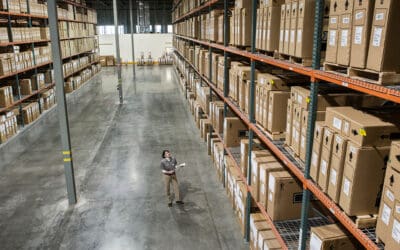RFID technology — and the ability to print RFID tags and labels quickly and cheaply from virtually anywhere — is radically improving efficiency and profitability in the apparel industry. However, before benefiting from the most advanced forms of RFID technology, apparel companies need to better understand the various components of the RFID label printing process.
Electronic Product Codes (EPCs)
The process begins with electronic product codes, which are embedded within a printed RFID label and are essential for supply chain management and inventory tracking. EPCs are stored inside the RFID tag’s memory when the tag is printed by an RFID printer. Here’s what the EPC includes:
- The first eight bits of the code contain a special header that identifies the EPC’s protocol.
- The next 28 bits show the organization in charge of managing the tag’s data (this number is given by the global consortium that manages EPC standards).
- The next 24 bits identify the class of the object being tagged, which identifies the type of product.
- The final 36 bits are uniquely assigned to the particular object being labeled.
The last two sections described above (3 and 4) are created by the apparel company that is using the tag for its business operations. Through the use of EPC codes, retailers can track exactly how many of one type of item they have and, if necessary, they can track down an individually specific item at any time.
The RFID Printing Process
Once an EPC is assigned to a specific item, it needs to be stored in the memory chip of the RFID tag by an RFID printer. Then it is attached to the product being tracked.
RFID tags are better than traditional barcode tags because radio waves are used to capture the electronic product code information rather than an optical scanner. This way, tracking inventory can be done automatically without hunting down and scanning every item in a warehouse or store.
The RFID printer creates a finished label that includes a uniquely printed inlay, which the printer puts inside a traditional apparel label or tag. The inlay has a microchip with the EPC data stored inside it. It also has an antenna to communicate with the RFID readers.
Where RFID Tags and Labels Can Be Printed
While you may already be familiar with how RFID tags work, you may not be aware of how many options the latest RFID technologies now provide for printing and implementing them. With MSM Solutions’ PortalTrack, RFID tags and labels can be printed virtually anywhere your apparel company is doing business: at the source, at a service bureau, at the distribution center, and even at the retail store where the items are sold:
- At the source: An RFID printer allows you to create custom labels on demand in the exact quantity you require at the apparel manufacturing facility. This helps prevent wasted tags and excess tag inventory, and will ultimately streamline the tagging process.
- In the store: Fully customizable print solutions allow you to quickly create cost-effective labels and to fix inaccurate tags and replace missing tags.
- At the distribution center: Printing at the distribution center allows you to simplify logistics by labeling items with specific information depending on the store at which they will end up being sold.
- At the service bureau: If it’s more convenient for business operations, MSM Solutions can print labels and tags in bulk at our service bureau to be quickly delivered to your business.
To learn more about the MSM Solutions PortalTrack system, and to learn how RFID technology can help your business boost productivity and profitability, visit our PortalTrack Apparel page. Also, for more information about the most effective, durable and technologically-advanced RFID printers on the market, check out Zebra RFID Printers.

